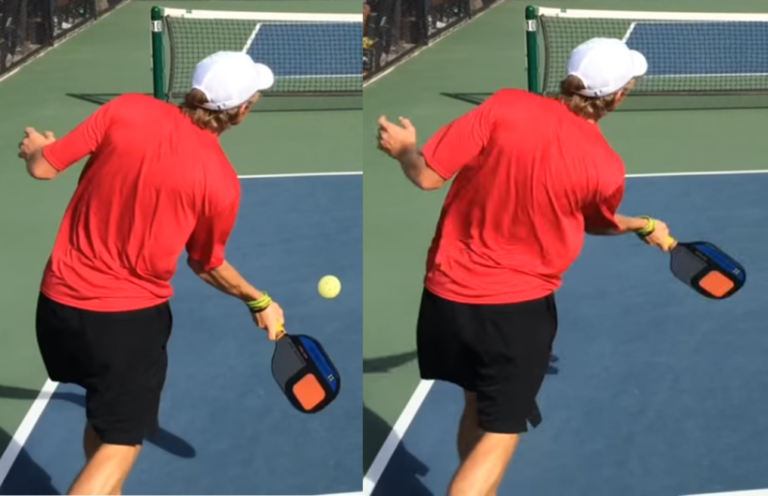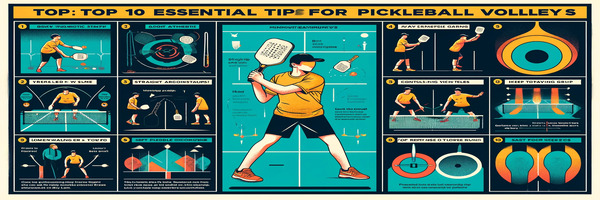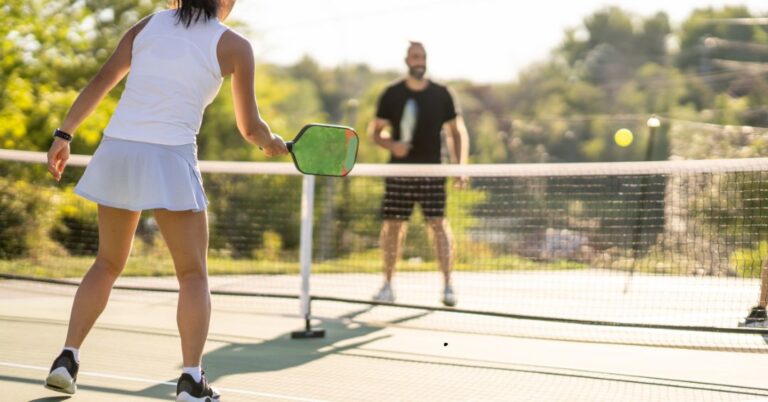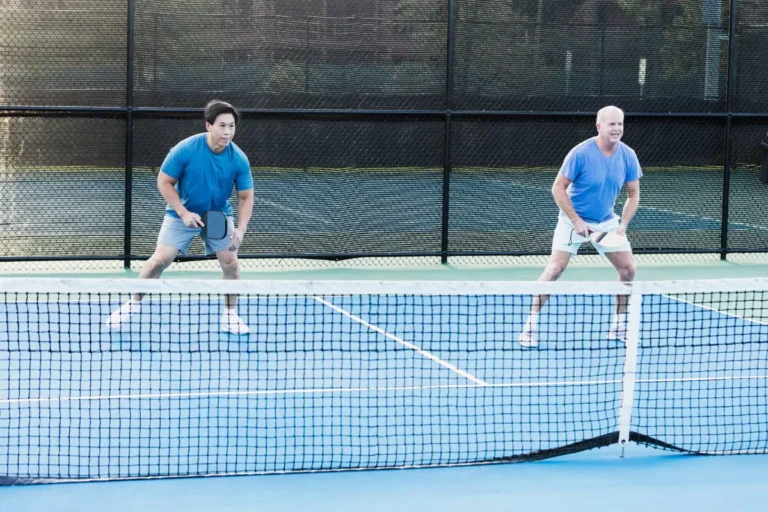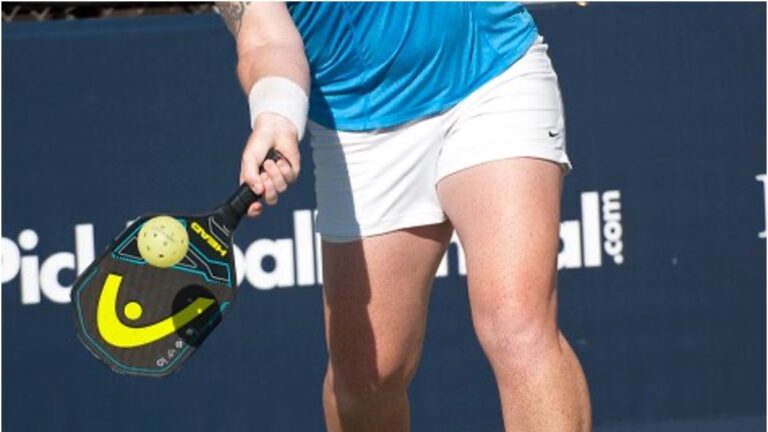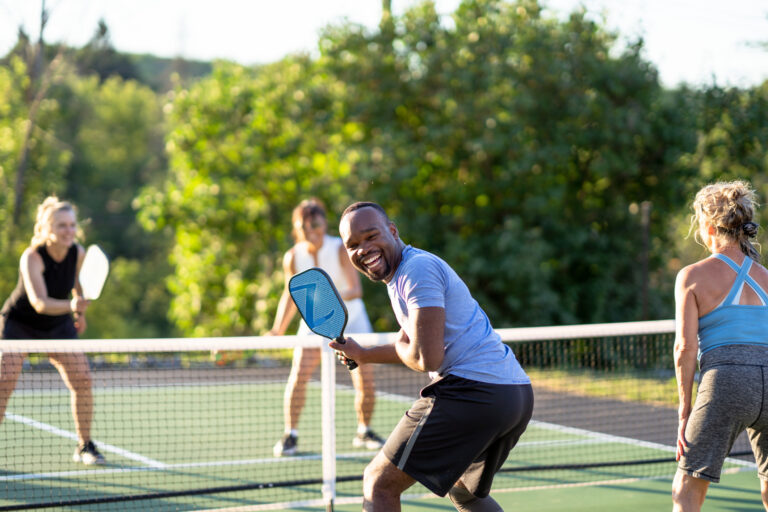What is a Dink in Pickleball? Mastering the Key Shot
What is a Dink?
What is a Dink in Pickleball? A dink in pickleball is a soft, controlled shot hit just over the net and into the opponent’s non-volley zone (NVZ). It is a strategic shot used to neutralize the opponent’s attack, keep the ball low, and force them to hit up on the ball. Dinking is a crucial skill in pickleball, often used when both players or teams are at the net, to maintain control of the rally until an opportunity arises to hit a more aggressive shot or force an error from the opponent.
Key Takeaways:
- A dink is a soft, controlled shot hit just over the net and into the opponent’s non-volley zone (NVZ).
- Dinking is a strategic shot used to neutralize attacks, keep the ball low, and force opponents to hit upward.
- It is a crucial skill in pickleball, often used when both players or teams are at the net.
- Dinking helps maintain control of the rally until an opportunity arises for an aggressive shot or forcing an opponent’s error.
- Mastering the dink requires practice, patience, and precision, focusing on a soft touch, low trajectory, and accurate placement.
- Effective dinking can disrupt an opponent’s rhythm, create openings for attacks, and ultimately elevate your overall pickleball game.
The key characteristics of a well-executed dink include:
- Soft touch: A dink requires a delicate touch, with just enough power to clear the net and land softly in your opponent’s court. The goal is to make it as difficult as possible for your opponent to attack the ball aggressively.
- Low trajectory: Dinks should be hit with a low trajectory, ideally no more than a foot or two above the net. This low trajectory makes it challenging for your opponent to hit an aggressive shot in return, as they’ll likely have to hit up on the ball.
- Precision placement: Accurate placement is crucial when hitting a dink. You want to keep the ball low and close to the net, forcing your opponent to hit up on their returns. Placing the ball deep in the NVZ or toward the sidelines can be particularly effective.
Dinks are typically used in pickleball strategy when both players or teams are at the net, engaged in a soft-shot battle. The goal is to maintain control of the rally, waiting for the right opportunity to hit a more aggressive shot or force your opponent into making an error. Dinking requires patience, finesse, and strategic thinking, as you look to outmaneuver your opponent and create openings for winning shots.
Why is Dinking Important?

Dinking plays a vital role in pickleball for several reasons:
- Disrupting your opponent’s rhythm: By hitting soft, controlled dinks, you can disrupt your opponent’s offensive rhythm and prevent them from hitting hard, aggressive shots. This is particularly important when facing opponents with strong ball-striking abilities, as dinking can neutralize their power and force them to play a more measured game.
- Forcing your opponent into a disadvantaged position: Well-placed dinks can force your opponent to hit up on the ball, leaving them in a low, uncomfortable position. When your opponent is consistently hitting up on the ball, it becomes easier for you to control the rally and look for opportunities to attack.
- Creating openings for an offensive attack: As you engage in a dinking rally, you can wait for the right moment to surprise your opponent with a slightly more aggressive dink or a put-away shot, catching them off-guard and winning the point. By maintaining control through dinking, you put yourself in a better position to capitalize on any weak returns or mistakes made by your opponent.
- Maintaining control of the rally: Dinking allows you to maintain control of the rally, dictating the pace and keeping the ball in play until you find the right opportunity to attack or your opponent makes an error. This patience and control can be mentally taxing for your opponent, leading to frustration and unforced errors.
As professional pickleball player Simone Jardim puts it, “Dinking is like playing chess on the pickleball court. It’s all about strategy, patience, and waiting for the perfect moment to strike.” By mastering the art of dinking, you can add a new dimension to your game and keep your opponents guessing.
How to Execute a Proper Dink Shot
To hit a dink effectively, focus on the following key elements:
- Grip: Use a comfortable, relaxed grip that allows you to control the paddle and generate a soft touch. Many players prefer a continental or modified continental grip for dinking, as it provides a balance between power and precision. Experiment with different grip positions to find what works best for you.
- Body positioning and footwork: Maintain a balanced, athletic stance with your feet shoulder-width apart. Keep your knees slightly bent and your weight on the balls of your feet, allowing you to move quickly in any direction. As you prepare to hit the dink, take small, controlled steps toward the ball, ensuring that you’re in the optimal position to make contact.
- Paddle movement: Use a short, controlled swing, primarily using your shoulder and arm, with minimal wrist action. Keep your paddle face open and aim for a soft contact with the ball. The key is to generate just enough power to clear the net and land the ball softly in your opponent’s court. Avoid the temptation to swing too hard, as this can lead to a loss of control and accuracy.
- Contact point: Aim to make contact with the ball in front of your body, at a comfortable height around waist level. This allows you to control the direction and depth of your dink more effectively. Make sure to keep your eyes on the ball and maintain a steady head position throughout the shot.
| Common Dinking Mistakes | How to Avoid Them |
|---|---|
| Hitting the dink too high | Focus on a low, soft trajectory, aiming for no more than a foot or two above the net |
| Not keeping the dink deep enough | Aim for the back of the NVZ or the baseline to keep your opponent pinned back |
| Lack of control and consistency | Practice regularly, focusing on soft touch, good form, and hitting to specific targets |
| Rushing the shot | Take your time, maintain balance, and wait for the right moment to hit the dink |
Remember, executing a proper dink shot takes practice and patience. Don’t get discouraged if you struggle initially – with time and dedication, you’ll soon find yourself hitting consistently effective dinks.
Dink Variations and Strategies
As you become more comfortable with the basic dink, you can start exploring different variations and strategies:
- Dink Shot vs. Dink Volley: You can hit dinks off the bounce (dink shot) or out of the air (dink volley). Dink volleys can be effective when you’re closer to the net and want to take time away from your opponent. However, they also require quicker reactions and good hand-eye coordination. Practice both variations to become a well-rounded dinker.
- Dink Placement: Experiment with different placement options to keep your opponent guessing and on the move. Some effective placement strategies include:
- Deep dinks near the baseline, forcing your opponent to hit up on the ball
- Soft dinks that land just over the net, making it difficult for your opponent to get under the ball
- Angled or crosscourt dinks that force your opponent wide and open up the court for your next shot
- Aggressive Dinking: Occasionally, you can use dinks with a bit more pace to keep your opponent off-balance and create openings for more aggressive shots. This can be particularly effective if your opponent is expecting a soft dink and is caught off-guard by the increased speed. However, be careful not to overdo it, as hitting the dink too hard can lead to errors.
- Varying depth, height, and angle: Keep your opponent guessing by varying the depth, height, and angle of your dinks. This makes it harder for them to anticipate and respond effectively. Mix up soft, low dinks with slightly higher, faster ones, and alternate between straight and angled shots to keep your opponent on their toes.
- Dinking patterns and sequences: Develop dinking patterns and sequences that set up openings for attacking shots. For example, you might hit a series of soft, deep dinks to draw your opponent back, then surprise them with a shorter, angled dink to force an error or weak return. Or, you could hit a few dinks to the same spot, then catch your opponent off-guard by switching directions.
- Transitioning from dinks to offensive shots: Be ready to transition from dinking to more aggressive shots when the opportunity arises. This could be a put-away shot when your opponent hits a weak return or an aggressive drive when they pop the ball up. By maintaining control through dinking, you’ll be better positioned to capitalize on these chances to win the point.
Practicing and Improving Your Dink Game
To master the art of dinking, incorporate the following into your pickleball training routine:
- Dink-focused drills: Develop drills that focus specifically on dinking, such as:
- Dink rallies with a partner, aiming to keep the ball low and soft over the net
- Target practice drills, where you aim to hit dinks to specific spots on the court
- Dink and volley drills, alternating between dink shots and dink volleys
- Play dink games and mini-tournaments: Engage in dink-only games or mini-tournaments with your training partners to put your skills to the test in a competitive environment. Set up games where the only shots allowed are dinks, and see who can maintain control the longest.
- Practice with partners of different skill levels: Play with partners of varying skill levels to adapt to different dinking styles and strategies. This will help you become a more versatile dinker and prepare you for the variety of opponents you’ll face in real matches.
- Analyze pro matches: Watch professional pickleball matches and pay close attention to how the pros use dinks in their game. Take note of their placement, variations, and transitional shots. Try to identify patterns and strategies that you can incorporate into your own game.
- Incorporate dinks into your overall training plan: Make sure to allocate sufficient time to practice dinking alongside other essential pickleball skills like serves, returns, and volleys. Aim for a well-rounded training regimen that covers all aspects of the game.
The Importance of the Dink in Pickleball
Mastering the dink can significantly elevate your overall pickleball game. Here’s why:
- Dinking is a key differentiator: The ability to consistently execute effective dinks is often what sets apart recreational players from competitive players. If you can maintain control and patience during dinking rallies, you’ll have a significant advantage over opponents who struggle with this aspect of the game.
- Dinking is crucial in high-level pickleball strategy: At the highest levels of pickleball, dinking plays a central role in point construction and overall strategy. Players use dinks to probe for weaknesses, create openings, and set up winning shots. Dinking rallies can last for dozens of shots, with players vying for control and waiting for the perfect moment to attack.
- Real-world examples of effective dinking: Watch any professional pickleball match, and you’ll see the importance of dinking in action. Players like Simone Jardim, Lucy Kovalova, and Tyson McGuffin are known for their exceptional dinking skills, using soft, precise shots to control rallies and outmaneuver their opponents.
For instance, in the 2021 US Open Pickleball Championships, Simone Jardim and Lucy Kovalova faced off in a highly-anticipated women’s singles final. The match featured numerous extended dinking rallies, with both players showcasing their finesse and control. Jardim ultimately prevailed, using her dinking prowess to keep Kovalova off-balance and create openings for winning shots.
Conclusion: Mastering the Dink for Pickleball Success
In conclusion, the dink is a fundamental shot that every pickleball player should strive to master. By understanding what a dink is, why it’s important, and how to execute it effectively, you’ll be well on your way to elevating your game and enjoying more success on the court.
Remember, mastering the dink takes time, patience, and practice. Focus on developing a soft touch, precise placement, and strategic thinking. As you incorporate dinks into your game, you’ll find that you have more control over rallies, can create more opportunities for aggressive shots, and can keep your opponents on their toes.
So, get out there and start practicing your dinks! With dedication and persistence, you’ll soon be a dinking dynamo, ready to take your pickleball game to new heights. Embrace the challenge, have fun, and enjoy the journey of becoming a better pickleball player.

